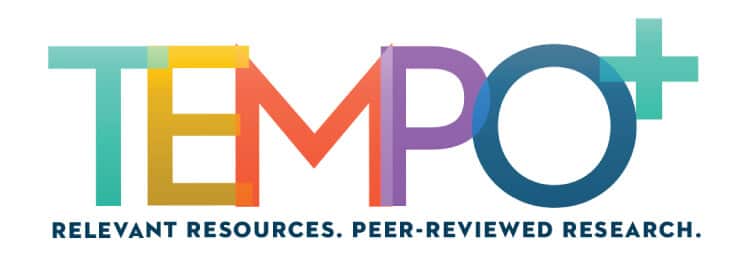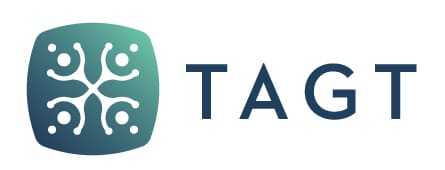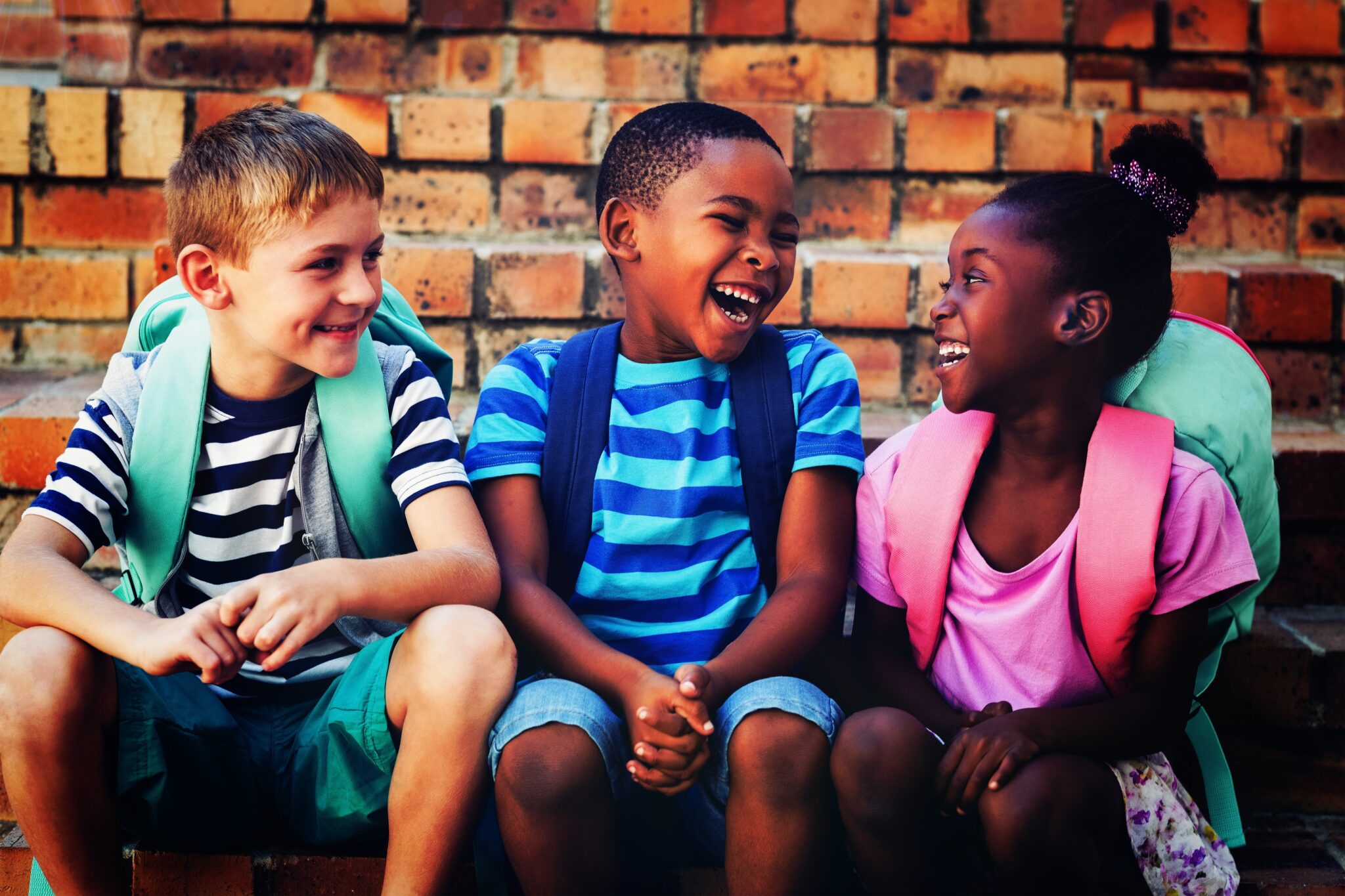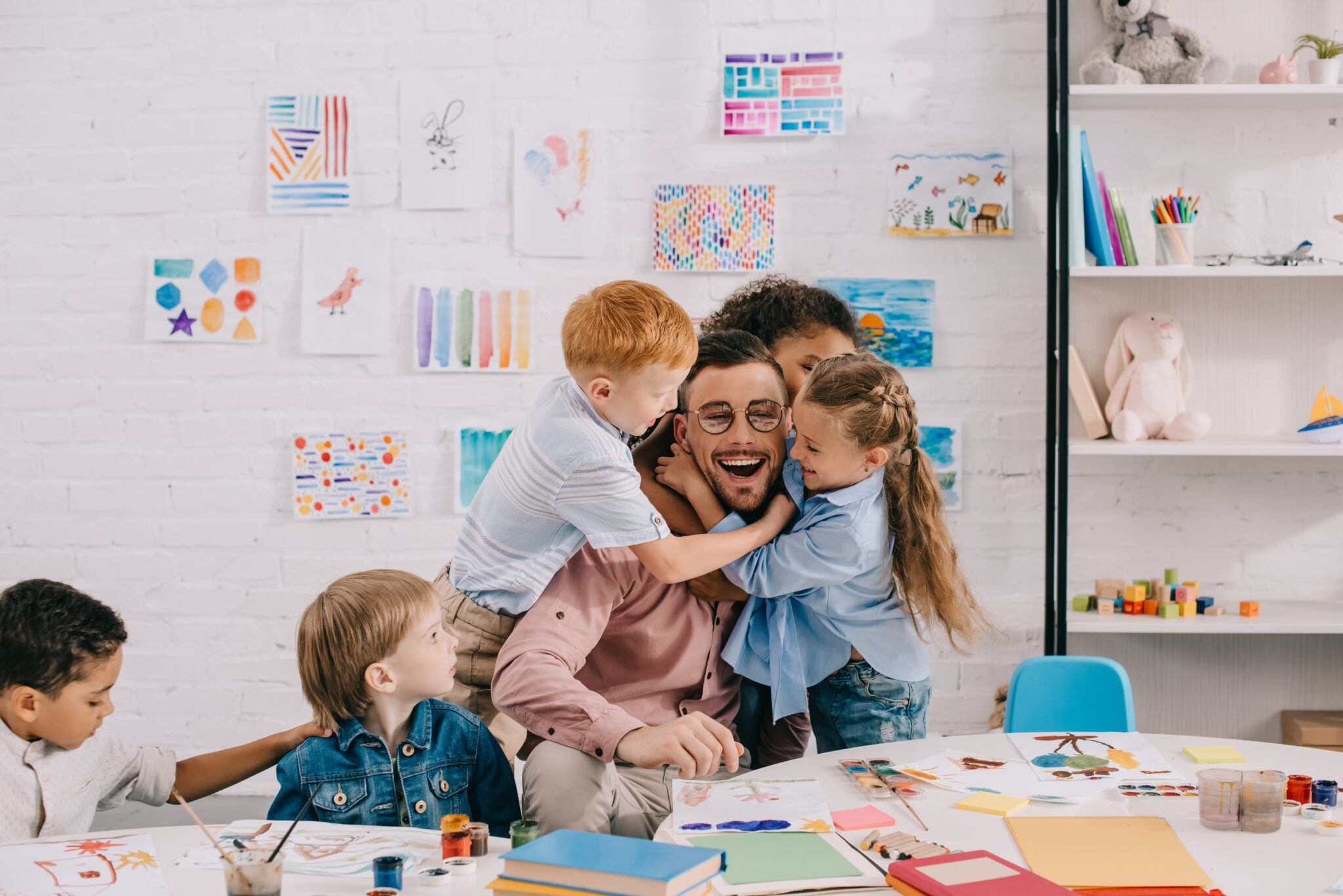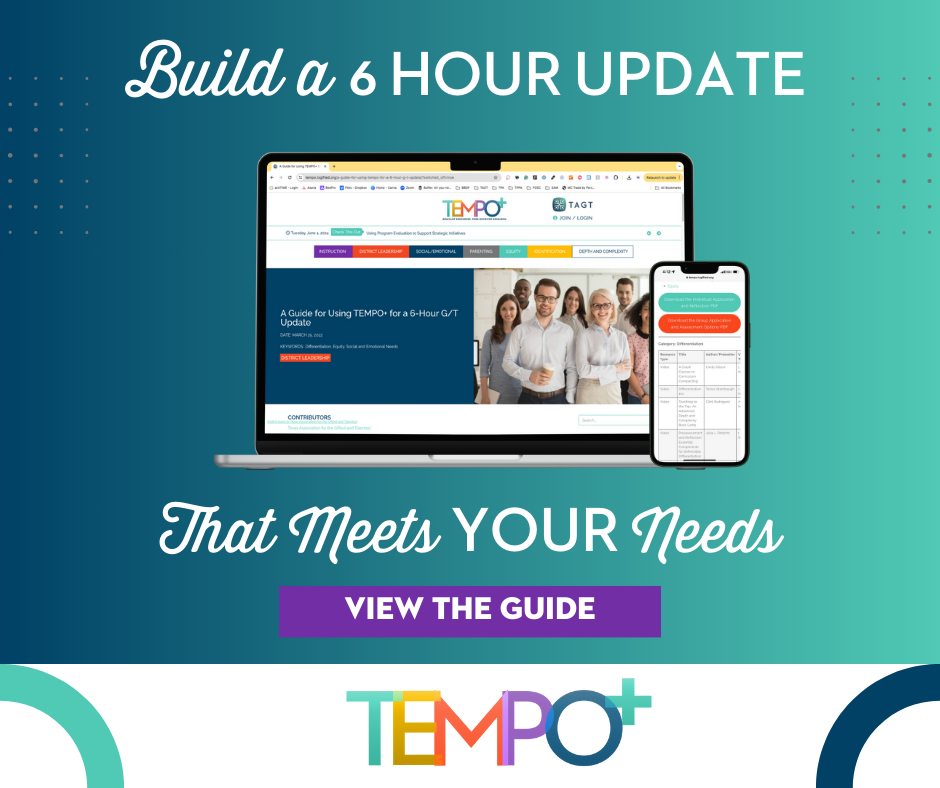A mother (who was also a special education teacher) was concerned about her kindergarten son.
He rarely spoke with his family and even less in his classroom. Observations at home raised red flags according to all the mother’s training. Midway through the school year, the mother met with the school counselor and explained that she was concerned that her son may qualify for special education services, but that she couldn’t quite put her finger on what the issues might be. The counselor promised to meet with the little boy and his teacher and get back to her. When the two met again, the counselor smiled and told the mother that not only was there not a thing to be worried about, but that the teacher and counselor were recommending her son for the gifted and talented program. I was that mother and my son is now 11 years old, still struggling in areas of social and coping skills due to overlooking a possible disability that was camouflaged by giftedness. My son’s instruction was not differentiated to meet the needs of a twice-exceptional student, only to that of a gifted child. Due in great part to this personal experience, I have chosen to study twice-exceptional learners in light of curriculum differentiation.

What Do Twice-Exceptional Learners Look Like and Where are They?
The twice-exceptional learner is an individual who is “simultaneously gifted and has a diagnosed disability” (Assouline & Whiteman, 2011, p. 380). Trail (2011) suggested some typical characteristics of the twice-exceptional leaner may include superior vocabulary, insightfulness to complex issues, advanced-level content, creativity, high energy, preference for real-world and open-ended assignments, inconsistent academic performance, deficits in cognitive processing, lack of organizational skills, and an inability to prioritize and plan efficiently. As one can see, these characteristics may seem to contradict each other, which is one of the dilemmas faced by educators as they plan instruction. Despite good intentions, schools today often view the identification of gifted and disability as mutually exclusive. Twice-exceptional learners can take on myriad characteristics, which makes it difficult to identify one specific curriculum model that is more successful than another. There are gifted students with physical disabilities, sensory disabilities, emotional disorders, Attention-Deficit/Hyperactivity Disorder, autism spectrum disorder, and learning disabilities. Teachers’ lack of exposure to exceptionalities and training about this population creates a hole in the instruction of the everyday classroom. When a student is twice-exceptional, instruction should be differentiated as such. There are specific challenges related to students in this arena and if left unaddressed, children are at risk of not achieving to their potential.
Twice-exceptional learners are one of the most underidentified populations in our schools today (Bianco & Leech, 2010; Ruban, 2005). McCallum et al. (2013) proposed that this is due to lack of efficient identification processes. They quoted the National Joint Committee on Learning Disabilities (NJCLD) as estimating that the prevalence rate may be as high as 20% of the population, with only 5% receiving services (NJCLD, 2011). The identification of a student as twice-exceptional requires an awareness of the relationship between the two areas of exceptionality by the teacher. This group is often difficult to identify due to the masking of one exceptionality by another. It is important that educators are able to view a student’s ability, characteristics, and performance through the lenses of both gifted and special needs. Baum (1989) identified three typical categories into which these students may fall as they are recognized as twice-exceptional. These are described in Table 1.
One of the major pitfalls in the lack of identification of the twice-exceptional population is the inadequate instruction they are receiving in the classroom (Ralabate, 2006). When discussing curriculum and instruction, the curriculum is the “what” is being taught and the instruction is the “how” it is being taught. This article will suggest a curriculum delivery model that, when implemented correctly, can be effective for students who are both gifted and have a disability.
What is a curriculum delivery model?
Curriculum is an instruction plan providing content for a specific group of learners while curriculum models are utilized as tools to assist in designing curriculum in a more systematic way (Ornstein & Hunkins, 2013). When curriculum is delivered in the classroom, various strategies should be utilized to differentiate instruction for the students. Different types of delivery models typically fall under whole group, small group, or one-on-one instruction with varying components attributed to the model.
Most educators would agree that learners should experience curriculum that allows them to perform to their maximum potential (Jordan, Schwartz, & McGhie-Richmond, 2009). Research has shown that the effectiveness of current curriculum models, specifically those for students with exceptionalities in the inclusive classroom, is deficient (Blecker & Boakes, 2010; McLeskey & Waldron, 2011; Thomas et al., 2012). In the Digest of Education Statistics, 2011, Snyder & Dillow (2012) reported that in the fall of 2009, 95% of students with exceptionalities were being served in the regular school environment. With inclusive classrooms becoming the national normal (Snyder & Dillow, 2012), it is probable that most educators will experience being responsible for providing appropriately challenging learning experiences for twice-exceptional students, whether in the special education or the general education classroom. This raises two very important questions: (1) What are the characteristics of an effective curriculum model for serving twice-exceptional students? and (2) How do we implement such a model?
What Should a Twice-Exceptional Curriculum Model Look Like?
Beginning with Bloom’s Taxonomy, curriculum models have driven instruction toward a more consistent overall model (Krathwohl, 2002). Unfortunately, all children who are twice-exceptional rarely benefit from one specific model and therein lies the problem. Willard-Holt, Weber, Morrison, and Horgan (2013) maintained that few teachers practice effective strategies for the twice-exceptional learner. Assuming that whatever model teachers are using for the general education population is sufficient for the twice-exceptional learner is a grave mistake.
Twice-exceptional learners have been said to have different characteristics that are oftentimes unique from the non-exceptional learner. Some possible challenging characteristics may include discrepancies between verbal and written ability, difficulty relating to peers, inappropriate social interactions, difficulty memorizing isolated facts, anxiety, depression, poor motivation, shyness, behavior problems, and organizational deficiencies (Trail, 2011). However, focusing on other unique characteristics such as high creativity, ability to work well with abstract concepts, high capacity for problem solving, commitment to the task, and analytical prowess could balance out the strengths and weaknesses. Willard-Holt, et al. (2013) suggested that the best way of meeting the needs of these students is by “highlighting and encouraging students’ abilities while supporting their coexisting exceptionalities” (p. 247). Research shows that focusing on the students’ abilities rather than their deficiencies promises to create a successful learning environment where the twice-exceptional (2E) learner will thrive (Assouline & Whiteman, 2011; Coleman, 2005; Kalbfleisch, 2013; Nicpon, Allmon, Sieck, & Stinson, 2011; Trail, 2011; Weinfeld, Barnes-Robinson, Jeweler, & Shevitz, 2002). Finding a curriculum model that incorporates this attention to strengths as well as supports the multitude of accommodations and modifications that can be applied to instruction of students that are twice-exceptional can be difficult.
Learner-Centered Education Model
A learner-centered education (LCE) model could efficiently address the more complex differentiation necessary for success of 2E learners. In 1997, McCombs and Whisler defined LCE as:
The perspective that couples a focus on individual learners (their heredity, experiences, perspectives, backgrounds, talents, interests, capacities, and needs) with a focus on learning (the best available knowledge about learning and how it occurs and about teaching practices that are most effective in promoting the highest levels of motivation, learning, and achievement for all learners). This dual focus, then, informs and drives educational decision-making. (p. 9)
When implementing this type of education, learners are recognized as having distinct differences, including learning styles, stages of development, ability, emotional states of mind, and other characteristics that have been noted as especially common in the twice-exceptional student. The learner-centered philosophy has been supported by multiple learning theories and can be traced as far back as the Chinese and Greek philosophers Confucius and Socrates (Ozmon & Craver, 2008). John Dewey, also a famous philosopher as well as psychologist and educator, believed that each child’s education should begin with understanding his or her capacities, interests, and talents in order to facilitate success (Simpson, Jackson, & Aycock, 2005). A curriculum model that focuses on the student rather than only the content is sure to prove more effective for the twice-exceptional learner.
In 2007, Jeffrey Cornelius-White published a meta-analysis of the literature about the learner-centered teacher-student relationship. He pointed out that this type of model “includes more of a focus on student variables and learning processes as critical to positive student outcomes” (p. 113). His study resulted in “above average” links between learner-centered teacher variables and positive student outcomes, specifically critical thinking, math achievement, drop-out prevention, self-esteem, verbal achievement, grades, reduction in disruptive behavior, and much more. In order to implement a learner-centered curriculum model for the 2E learner, an infrastructure must be in place for teachers to follow.
LCE Model Infrastructure
As research has shown, teachers have a remarkable opportunity to influence their students’ future that can be dependent on how they interact with them (Jong, Tatwijk, Verloop, Veldman,& Wubbels, 2012). Learner-centered teachers have the ability to develop the 2E learner’s talents by planning educational experiences based on questions such as “Who do we serve?”, “How should specific curriculum be constructed?”, and “What learning services are required to ensure their success?” This attention to who we are teaching will lead to what we are teaching and more importantly how we should teach it.
Putting the focus on the learner allows for an organization of the classroom that can include development of strengths, self-direction, collaboration between peers, self-reflection, strength-orientated accommodations, enrichment activities, adult modeling, and most importantly, a nurturing environment where individual differences are respected (Weinfeld et al., 2002). To implement a learner-centered model for the 2E student, specific objectives must be met: (1) know your student, (2) plan strength-based instruction, (3) allow the student to take responsibility for his or her learning, (4) continuously assess, and most importantly, (5) maintain an environment free of fear.
Know Your Student
The first strategy I suggest for this type of model takes into consideration specifically who you are serving. In order for teachers to recognize who their twice-exceptional learners are, they need to have some inclination of what to look for. Simply sharing the possible characteristics identified above with the staff could create a higher awareness for those students who may be twice-exceptional, whether officially acknowledged or not. There are several resources online for both educators and parents that outline characteristics, suggested strategies, and more regarding the twice-exceptional learner. Some resources are:
Wright’s Law
http://www.wrightslaw.com/info/2e.index.htm
Council for Exceptional Children (CEC)
http://www.cec.sped.org/
Coordinated Campaign for Learning Disabilities (CCLD)
http://www.aboutld.org/
Learning Disabilities Online
http://www.ldonline.org/
Learning Disabilities Association of America (LDA)
http://www.ldanatl.org/
Plan Strength-Based Instruction
Once the first component has been successfully completed, you should have a good profile of your 2E learner. This is where you will create a curriculum more unique to your learner. Some common deficiencies of the 2E learner can be addressed by counteracting with their strengths. For example, if you have a student that is both ADHD and gifted, you could use advanced organizers that the student creates himself. This not only helps with strengthening focus, but allows the student to take ownership of learning through the ability to be creative. Another example could include a student with dyslexia who is gifted. Students with dyslexia struggle to read, often reading well below grade level. It is a mistake to assume that we can motivate these students to read by staying with books at their level. Usually, the level books they are reading are not in alignment with their cognitive level. Trail (2011) suggested using computers or alternate ways for these students to access literature that is higher level and addresses topics that they may be interested in.
Some strategies that Tomlinson (2000) suggested to support strength-based instruction include:
Be aware of who your student is.
Offer activities that focus on the strengths of each student.
Allow for open-ended responses to establish content knowledge.
Create tasks that fit the student profile and learning style.
Provide multi-sensory instruction.
Utilize guided discovery.
Afford more choices for the students.
Offer real-life and hands-on assignments.
Vary content, process, and product.
Allow the Student to Take Responsibility
The learner-centered approach empowers students to take responsibility of their own education. Expecting students to take control of their learning is not a new concept. Research over the last decade supports the idea that this is an effective strategy to use when helping students succeed (Gonzales & Nelson, 2005). Weinfeld et al. (2006) suggested that once a student is “provided with tools, strategies, and skills for learning” (p. 92) he will be able to become a partner in making decisions about his education.
Several of the same strategies Tomlinson (2000) suggested for strength-based learning can be applied to helping learners become self-directed. Below are some additional things to keep in mind to promote self-directed learning:
Talk less and allow students to talk more.
Arrange the classroom in a collaboration-friendly lay out.
Model learner behaviors such as “self-talk,” open-mindedness, higher level thinking, and reflection.
Teach students to set goals.
Allow for reflection after activities.
Promote student led activities.
Continuously Assess
Coleman (2005) discussed the importance of “dynamic assessment” with students who are twice-exceptional. She suggested that this kind of assessment allows teachers to “check in” with their students throughout the year. She noted that assessment can answer questions about “what they know,” “what they do not know,” and “where they have misconceptions.” She proposes that practicing ongoing dynamic assessment will allow more time for effective instruction.
Assessment of the twice-exceptional learner can take many different forms, from written tests to observing the child brainstorming about the topic at hand (Winebrenner, 2003). However, no matter what form is practiced, process monitoring can be an effective tool to modify measurable goals or even specific assignments with which the student may be struggling. A variety of assessments help to provide specific information about the 2E learner that could have been initially overlooked. In addition, the educator should use a variety of instructional techniques and tools that will be sure to capture the uniqueness of the 2E learner. For example, the student may create a podcast instead of standing in front of the classroom to do an oral report or may make a model using a scientific concept rather than writing a report to show mastery of an objective. The key to determining what kind of assessment to use goes back again to knowing your students and constantly observing them in the classroom.
Maintain an Environment Free of Fear
Underachievement of the 2E learner is often derived from an environment that doesn’t match the student (Siegle & McCoach, 2005). Creating a school climate that is “safe” and encourages risk taking can be challenging, especially with this population. For example, many twice-exceptional learners are known to have high anxiety concerning failure. They will often refuse to complete an assignment rather than attempting with the possibility of failing (Trail, 2011). This unwillingness to take risks, especially in regard to academics, is a common characteristic in this population.
There are several ways to create an inviting environment for the 2E learner. Some suggestions are (Clifford, 1990; Trail, 2011; Weinfeld et al., 2006):
Model risk taking and failure.
Share success stories of those who were also twice-exceptional and/or had some sort of disability, but overcame it.
Create an environment in which risk-taking is rewarded by encouraging and rewarding students for attempting difficult tasks.
Decrease the discomfort or pain of failure.
Recognize the social and emotional needs of students.
Teach students strategies to cope with stress and frustration.
Assign a mentor to students.
Summary
Baum, Cooper, and Neu (2001) stated that while it may be challenging to educate the 2E learner, success may be accomplished by “providing these students with a curriculum that both accommodates their gifts and talents and simultaneously allows the students to compensate for problematic weaknesses” (p. 477). The benefits and rewards of successfully educating a student who is twice-exceptional are numerous. When examining the positive impact that some of the most famous contributors to our society have had in light of the notion that they were very likely twice-exceptional, one can easily see the important implications of an effective education for this population. People such as Albert Einstein, Steven Spielberg, Winston Churchill, and Pablo Picasso all struggled with learning (Nowak, 2001); however, as 2E blogger Carolyn K. says it, these learners are just “exceptional squared” (Kottmeyer, 2013)!
My son is now 11 years old and in 5th grade. His teachers adore him because he makes straight As and is quiet; however, he is going to a therapist every other week to deal with the social deficiencies he experiences as a symptom of what I have only hypothesized to be mild Asperger’s syndrome. He is oftentimes sad and thinks everyone hates him. He doesn’t understand figurative language, has no desire to play sports, and needs no interaction with peers to be happy. He is extremely literal and cannot comprehend “off the cuff” remarks or sarcasm. I know my son will be fine, but I believe that the struggles we are facing are something that should have been dealt with in the primary grades. Just like any exceptionality, twice-exceptional students have specific needs and will attain more success with instruction differentiated to address their abilities.
References
Assouline, S. G., & Whiteman, C. S. (2011). Twice-exceptionality: Implications for school psychologists in the post-IDEA 2004 era. Journal of Applied School Psychology, 27, 380–402. doi: 10.1080/15377903.2011.616576
Baum, S. (1989). Gifted but learning disabled: A puzzling paradox. Preventing School Failure: Alternative Education for Children and Youth, 34(1), 11–14. doi: 10.1080/1045988X.1989.9944546
Baum, S. M., Cooper, C. R., & Neu, T. W. (2001). Dual differentiation: An approach for meeting the curricular needs of gifted students with learning disabilities. Psychology in the Schools, 38, 477–490. doi: 10.1002/pits.1036
Bianco, M., & Leech, N. L. (2010). Twice-exceptional learners: Effects of teacher preparation and disability labels on gifted referrals. Teacher Education and Special Education, 33, 319–334. doi: 10.1177/0888406409356392
Blecker, N. S., & Boakes, N. J. (2010). Creating a learning environment for all children: Are teachers able and willing? International Journal of Inclusive Education, 14, 435–447. doi: 10.1080/13603110802504937
Clifford, M. M. (1990). Students need challenge, not easy success. Educational Leadership, 48(1), 22–26.
Coleman, M. R. (2005). Academic strategies that work for gifted students with learning disabilities. Teaching Exceptional Children, 38(1), 28–32.
Cornelius-White, J. (2007). Learner-centered teacher-student relationships are effective: A meta-analysis. Review of Educational Research, 77, 113–143. doi: 10.3102/003465430298563
Gonzales, A. H., & Nelson, L. M. (2005). Learner-centered instruction promotes student success. The Journal, 32(6), 10–15.
Jong, R., Tatwijk, J., Verloop, N., Veldman, I., & Wubbels, T. (2012). Teachers’ expectations of teacher–student interaction: Complementary and distinctive expectancy patterns. Teaching and Teacher Education, 28(7), 948–956.
Jordan, A., Schwartz, E., & McGhie-Richmond, D. (2009). Preparing teachers for inclusive classrooms. Teaching and Teacher Education, 25, 535–542. doi: 10.1016/j.tate.2009.02.010
Kottmeyer, C. (2013, September 20). Twice exceptional. Retrieved from http://www.hoagiesgifted.org/twice_exceptional.htm
Kalbfleisch, M. L. (2013). Twice-exceptional students: Gifted students with learning disabilities. In C. M. Callahan (Ed.), Fundamentals of gifted education: Considering multiple perspectives (pp. 358–368). New York, NY: Routledge.
Krathwohl, D. R. (2002). A revision of Bloom’s Taxonomy: An overview. Theory Into Practice, 41, 212–218. doi: 10.1207/s15430421tip4104_2
McCallum, R. S., Bell, S. M., Coles, J. T., Miller, K. C., Hopkins, M. B., & Hilton-Prillhart, A. (2013). A model for screening twice-exceptional students (gifted with learning disabilities) within a response to intervention paradigm. Gifted Child Quarterly, 57(4), 1–14. doi: DOI: 10.1177/0016986213500070
McCombs, B. L., & Whisler, J. S. (1997). The learner-centered classroom and school: Strategies for increasing student motivation and achievement. San Francisco, CA: Jossey-Bass.
McLeskey, J., & Waldron, N. L. (2011). Educational programs for elementary students with learning disabilities: Can they be both effective and inclusive? Learning Disabilities Research & Practice, 26(1), 48–57. doi: 10.1111/j.1540-5826.2010.00324.x
National Joint Committee on Learning Disabilities. (2011, March). Learning disabilities: Implications for policy regarding research and practice. Retrieved from http://www.Idonline.org/about/partners/njcld
Nicpon, M. F., Allmon, A., Sieck, B., & Stinson, R. D. (2011). Empirical investigation of twice-exceptionality: Where have we been and where are we going? Gifted Child Quarterly, 55, 3–17.
Nowak, M. (2001). Double Inequity, Redoubled Critique: Twice-Exceptional (Gifted+ Learning Disabled) Students, the Equality Ideal, and the Reward Structure of the Educational System. In Unpublished paper presented at the American Anthropological Association annual meeting.
Ornstein, A. C., & Hunkins, F. P. (2013). Curriculum: Foundations, principles, and issues. Boston, MA: Pearson.
Ozmon, H., & Craver, S. M. (2008). Philosophical foundations of education. Upper Saddle River, NJ: Pearson/Merrill Prentice Hall.
Ralabate, P. (2006). The twice-exceptional dilemma. Washington, DC: National Education Association.
Ruban, L. M. (2005). Identification and assessment of gifted students with learning disabilities. Theory Into Practice, 44, 115–124. doi:10.1207/s15430421tip4402_6
Siegle, D., & McCoach, D. B. (2005). Making a difference: Motivating gifted students who are not achieving. Teaching Exceptional Children, 38(1), 22–27.
Simpson, D. J., Jackson, M. J., & Aycock, J. C. (2005). John Dewey and the art of teaching: Toward reflective and imaginative practice. Thousand Oaks, CA: Sage.
Snyder, T. D., & Dillow, S. A. (2012). Digest of education statistics, 2011. Washington, DC: U.S. Department of Education.
Thomas, C. N., Hassaram, B., Raghavan, N., Kinzer, C. K., & Mulloy, A. M. (2012). The integrated curriculum project: Teacher change and student outcomes within a university–school professional development collaboration. Psychology in the Schools, 49(5), 444–464.
Tomlinson, C. A. (2000). Differentiation of instruction in the elementary grades. Champaign, IL: ERIC Clearinghouse on Elementary and Early Childhood Education.
Trail, B. A. (2011). Twice-exceptional gifted children: Understanding, teaching, and counseling gifted students. Waco, TX: Prufrock Press.
Weinfeld, R., Barnes-Robinson, L., Jeweler, S., & Shevitz, B. (2002). Academic programs for gifted and talented/learning disabled students. Roeper Review, 24, 226–233.
Willard-Holt, C., Weber, J., Morrison, K. L., & Horgan, J. (2013). Twice-exceptional learners’ perspectives on effective learning strategies. Gifted Child Quarterly, 57, 247–262.
Winebrenner, S. (2003). Teaching strategies for twice-exceptional students. Intervention in School and Clinic, 38, 131–137.
Tonya Trepinski, M.Ed., is a doctoral student in the Department of Educational Psychology at Baylor University. She is a 10-year veteran teacher of general and special education as well as a behavior analyst at the Baylor Autism Resource Center. She currently holds a master’s degree in special education as well as practices as a local advocate of students with exceptionalities. She is the area supervisor for a nonprofit organization, Jill’s House, that provides respite to students with intellectual disabilities, including those who are twice-exceptional, and their families. She may be reached at the Office of Professional Practice, Baylor University, One Bear Place 97301, Waco, TX 76798; tonya_trepinski@baylor.edu.
Designing Learning Experiences for the Exceptionally Squared Student PDF
